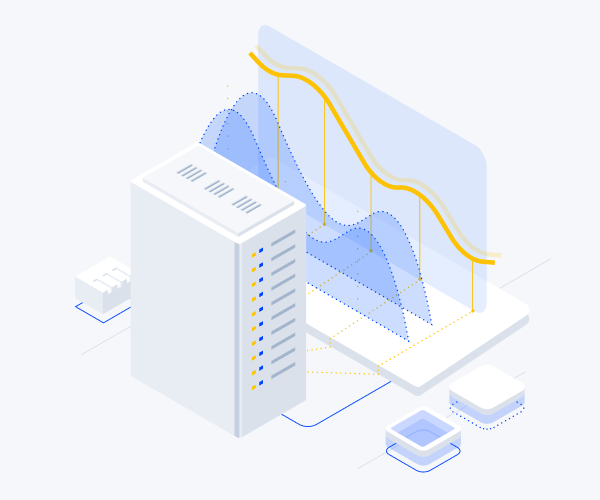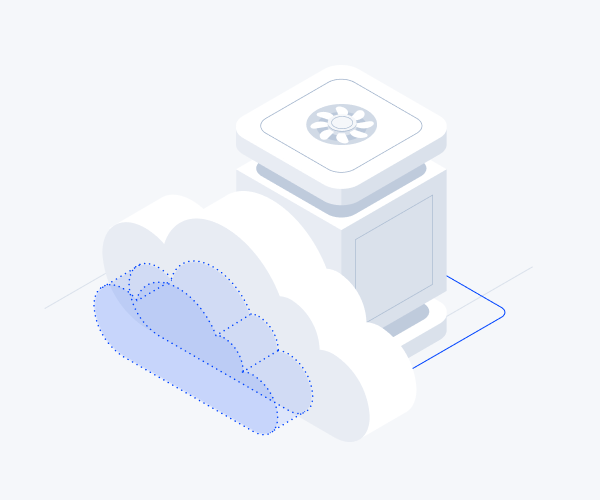7 Top Cloud Computing Trends That Will Transform the Tech Industry in 2021

Sometime in the future, Covid-19 will be referred to in history as one of the greatest disruptions to ever occur in business models across industries, in the 20th century. This is the year when every business had to learn how to operate virtually. The gym lovers had to take sessions through online streaming services, corporate meetings went virtual, and so much more! In the tech world, especially the cloud computing industry, the cloud service providers had to increase their level of innovation to help businesses handle the chaos.
Despite the rise of trends in cloud computing such as the integration of the Internet of Things (IoT) and, big data, Artificial Intelligence (AI), the most important innovations leaned towards helping businesses face the challenges created by the pandemic. This led to a spike in cloud market revenue for Q12020 $29 billion.
With 94% of workloads expected to run on the cloud, it’s critical to underpin the cloud computing trends to expect in 2021. To help your business prepare for any changes in cloud computing models, we have created a list of the 7 top cloud computing trends in 2021, and how they can affect your business and the tech industry at large:
1. Moving Cloud Towards The Edge
The ‘Edge’ simply refers to a computing model that optimizes web applications and internet devices by reducing the data source distance. According to Forrester, components such as the rapid 5G rollout, fast AI & ML integration into cloud computing, and other relevant factors will push the cloud towards the edge. Some of the advantages of edge computing include easy deployment for services in the case of developers, and the ability of the cloud to solve the gap existing between the cloud and end-users. However, this may create a problem when it comes to providing high levels of data security.
2. AI and ML Will Revolutionize Cloud Computing
AI will be an integral ingredient in driving the cloud towards its full potential in 2021. Think about what the cloud, in collaboration with AI could do to anticipated inventions such as smart cities, self-driving cars, automated health checks, among other inventions.
Through cloud computing services such as Infrastructure as a Service (IaaS), or Platform as a Service (PaaS), developers working with low budgets will be able to utilize the full power of Artificial Intelligence(AI) to drive the world to a more advanced civilization.
Machine learning will continue playing a critical role to keep data centers running efficiently.
3. Increased Demand For Private, Hybrid Cloud, and Multicloud
The argument to choose between private, public, or hybrid may never end. All cloud solutions have their portions of charm and poison in terms of performance, ease of use, data control, and security. Many organizations have learned the hard way that there is no one cloud solution that could work for all enterprises, thus turning into cloud deployment models that give them the freedom to do what they want.
Public cloud is perfect for storage, private cloud is perfect for organizations dealing with sensitive data, and hybrid is for those that want a taste of both worlds.
Due to the difference in services offered by cloud service providers, many organizations will be turning into multicloud in the near future.
In fact, according to Gartner, 80% of customers will be adopting multicloud into their cloud strategy.
4. Rise of The Cloud Native
As mentioned earlier, the rise of the multi-cloud is imminent. To activate the experience to be brought about by this change, cloud native technologies will need to be added to the equation. Here are some components that make up the cloud native technology stack:
1. Containerization
With projected revenue growth of 24 million by 2024, container management repositories hold the most power when it comes to cloud-native capabilities. This is because they can perform tasks such as workload transportation between multiple channels (on-premise, the cloud, and on the edge.)
2. Serverless computing
Being among the 5 best fastest-growing Platform as a Service(PaaS) cloud services in 2020, serverless computing depicts a cloud paradigm that enables developers to build applications across different clouds with different viewpoints.
3. Orchestration Platforms
These platforms, like Kubernetes, reduce the complexity of container management across different cloud service providers.
5. Increased need for, Data security, privacy, and Regulations
All the trends we have discussed earlier bring with them a whole new level of innovation, and opportunities, but also a high level of data security risk. According to LogicMonitor, IDC, 33.3% of organizations struggle with cloud adoption because of data security. There are many questions on how the integration of new technologies such as 5G, serverless computing, edge computing, and many others will affect the cloud in relation to cloud security.
Cloud service providers are therefore expected to come up with sophisticated mechanisms that will ensure cloud data security.
6. Virtual Desktops May Be The Workplace of The Future
Am writing this blog post on my Chromebook. Why do I tell you this you ask? Because this is a perfect example of what a virtual desktop means. Unlike Amazon and Microsoft who offer Desktop as a Service through workspaces and windows virtual desktop respectively, Google offers this through Chromebook devices.
The idea behind this model is to have the entire workstation delivered to our devices. Not only does it improve productivity, but also cuts off operation costs. These, along with more advantages make it likely for this functionality to be adopted in 2021.
7. Public Cloud Revenue Will Skyrocket
The pandemic reshaped and re-defined the cloud to enable businesses to be able to operate remotely. Many businesses found themselves desperate enough to sacrifice their customer experience and quality for cost-efficiency.
This led to the accelerated growth of public cloud adoption, along with revenue. Forester predicts that this trend will continue to spike, mainly because the aftermath of the pandemic will likely be forwarded to 2021. The public cloud infrastructure revenue is expected to hit $120 billion in 2021 (35% increase).
Embracing The Future Cloud
With computer processing speeds doubling almost every 18 months, it is difficult to underpin the direction which leading technology components such as cloud computing will take in years to come. Despite the uncertainty, we still believe that cloud computing is the future and that it will shape society for the better in years to come.





